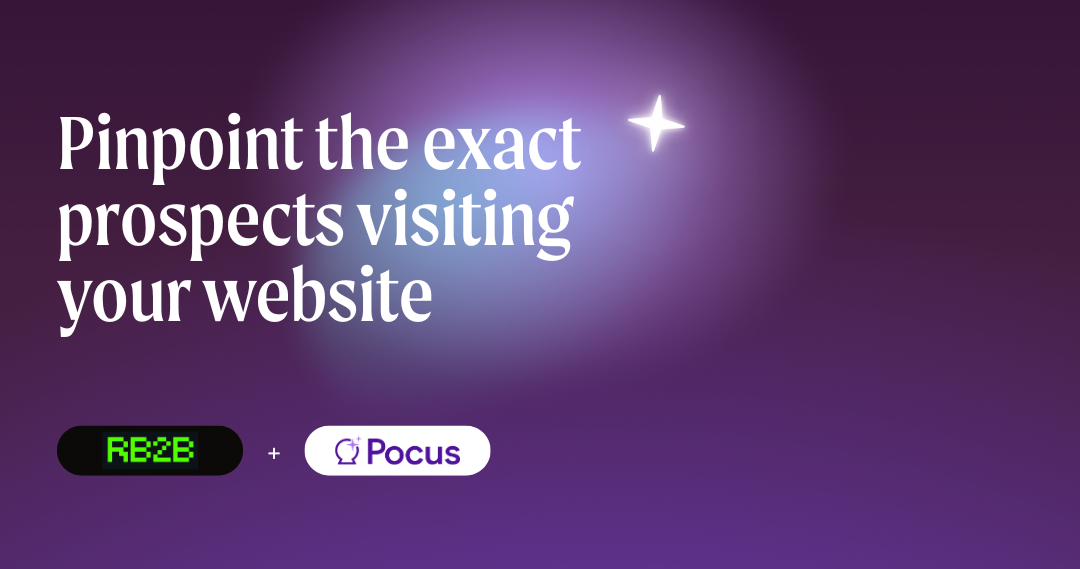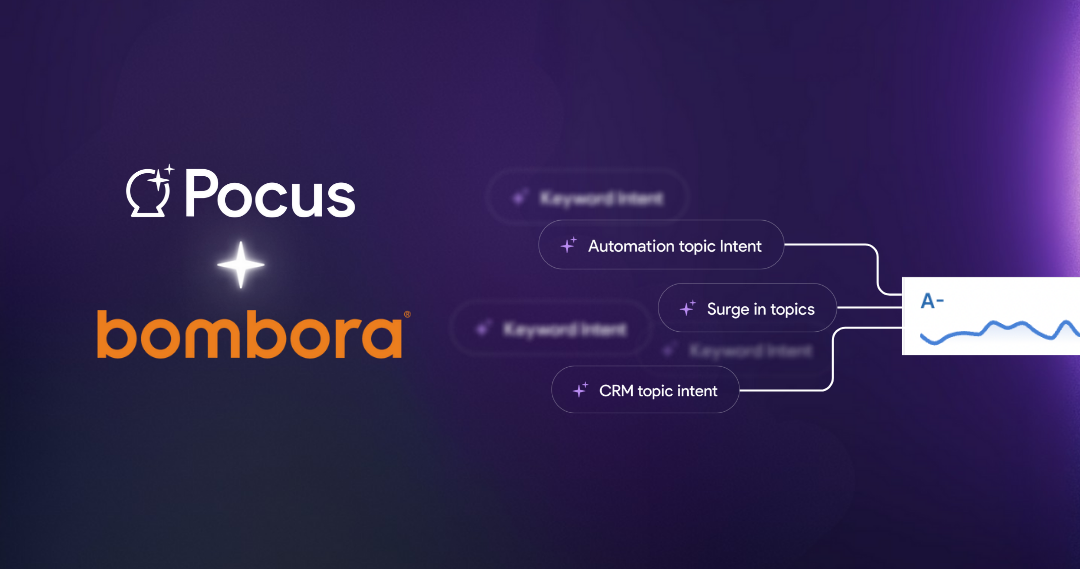This post was originally published for The Rocket GTM newsletter by Alfie Marsh and excerpted here.
Product-Led-Growth (PLG) has taken the world by storm. The PLG Index by OpenView Partners has consistently outperformed non-PLG companies and companies with traditional sales-led organizations are wanting to join the party.
Using the product to attract users and generate pipeline has proven a powerful distribution strategy and is fundamentally changing the way revenue organizations are being built.
To explore these transformations I’ve teamed up with Pocus as we unpack 7 ways PLG will impact revenue organizations.
#1 Marketing Drives Traffic To The Product, Not Sales Teams.
Marketers traditionally generate pipeline and funnel leads to sales teams, who convert them into paying customers. Under a PLG model however, marketing creates demand for the product directly by driving traffic towards freemium plans/trials, skipping out sales teams altogether.
The product acquires customers, not sales.
Sales still play a crucial role in generating revenue. Since the product now holds a large pool of active and qualified users, sales teams can monitor customer behavior directly in the product and cherry pick which who to reach out to.
Under the PLG model salespeople will spend less time acquiring customers and more time activating them.
#2 The Role of Sales Will Change.
Focus Shifts From Value Capture to Value Creation
The role of a sales development representative (SDR) is to generate pipeline, but since pipeline will be driven by customers already using the product the SDR’s role will change to one of a “sales-assist” model, identifying and supporting customers indicating high revenue potential.
If you want to learn more about the sales-assist role check out this article by Pocus as a primer.
Instead of getting customers in the door, sales reps will focus on unlocking value within those customers already using the product. Unlocking value may come in the form of upsells to paid features (seat activation) or activating new users to join their colleagues (seat expansion).
Sales assist roles require a mix of sales, customer success, and support skills to help guide customers towards success. Value is not captured upfront in large contracts anymore, rather customers will use the product for free to begin with and you capture value only once it’s created.
Sales teams will evolve from “selling” to “enabling”.
Products Will Be Experienced, Not Demonstrated
Traditionally Account Executives help customers uncover value by offering product demonstrations. The customer often makes a purchasing decision based on value that’s been demonstrated, but rarely experienced.
PLG motions flip this model on its head.
Since value is experienced via the product and not demonstrated by sales reps, commercial teams are better off helping the customer unlock valuable moments inside the product. This may happen by sharing educational content, offering training sessions, or explaining new product features to try out, but the focus is experiential.
Sales leaders are re-writing playbooks that put customer enablement at the heart of revenue organizations.
#3 Closing Is Evident. Expansion Is Everything.
Since the barriers to entry of trying a new product are practically zero, customers initially close themselves. Commercial teams will naturally shift their focus and energy from closing to expansion.
Leveraging product data will help identify trigger points or signals that suggest an account is ripe for seat activation or seat expansion.
- If more than five users adopt X feature they’ll likely pay for Y upgrade
- If the sales and marketing teams both use the product within 10 days there is a 90% change they’ll upgrade to a paid plan
- If a users download 3 reports per month there may be an opportunity for seat expansion
Sales motions will be come more data driven and playbooks will be centered in identifying and activating expansion opportunities over closing initial contracts.
#4 Product-Led-Sales Driven Motions
Product Signals Will Drive Sales Motions
From experience we know that outbound leads behave differently to inbound ones, causing us to have different sales motions which are adapted for each model.
Inbound leads come ready to buy, but can come from a wide variety of segments. They tend to be smaller in contract value, but close more quickly. Outbound leads on the other hand tend to take longer to close, require more customer education, but often carry larger contract sizes to match.
In the world of product-led-growth our sales motions will have to adapt too.
SDRs who segmented markets based on firmographic information like company size, revenue, fundraising events, and new hires will have new information about product usage to play with.
You essentially welcome your prospect into your house, watch how they behave, and offer a better experience according to their behavior
Signals that inform sales teams to reach out will come directly from the product. Customer behavior inside your product will help indicate whether a customer is likely to upsell or expand users. Similar to traditional MQLs (marketing qualified leads), the product can offer PQLs (product qualified leads).
Mark Roberge offers some examples of PQLs at Slack, Dropbox, and Hubspot in his article “The Science of Scaling”:
- Slack: 70% of customers send 2,000+ team messages in the first 30 days 2.
- Dropbox: 85% of customers upload 1 file in 1 folder on 1 device within 1 hour 3.
- HubSpot: 80% of customers use 5 features out of the 25 features in the platform within 60 days
Stages of Revenue Expansion: Seed, Land, and Expand
As we stated earlier, the traditional sales model captures the majority of value upfront in the initial contract value. Since PLG motions start with little to no value capture there multiple steps to unlocking the full potential of a customer.
- Seed: An individual user becomes engaged with your product, perhaps through marketing campaigns or viral networks. They’ll probably start on a freemium plan. Little to no sales effort will be involved here, the product should do everything to convert.
- Land: The product becomes relevant in the company. Perhaps multiple people are on a freemium plan and it makes sense to upgrade to premium enterprise features. At the “land” stage, value extraction happens via self-serve conversions to paid plans. The greater product adoption creates a land swell and momentum that can push adoption across the entire enterprise. At this stage, penetration risks stagnating without the help of a dedicated sales team.
- Expand: A dedicated sales team will leverage product signals to identify key stakeholders to work with. They’ll drive product adoption throughout the enterprise and negotiate with multiple stakeholders to enter into longer term contracts. The “expand” phase will become an exciting place to build a career in the coming years. Many of the playbooks here are still unwritten.
#5 Sales Incentives Will Change.
In traditional sales models most of the value is captured upfront in sales bookings. Reps are incentivized to lock in as much in the initial contract signing as possible since that’s what their commissions are based on.
This incentive structure is counter intuitive for a PLG model since most usage and product adoption happens later on. If sales teams try to extract too much value upfront they’ll restrict the number of users who adopt the platform.
In a PLG model you want to remove all barriers to entry so you have maximum acquisition offering fertile ground for mass product adoption into paid plans later on.
So how do you incentivize a sales team in this environment?
The short answer is to incentivize long term value creation by aligning sales commissions to customer outcomes, expressed in product activation.
One example would be usage based pricing where sales reps may be paid for the entire first year of customer upsells, thus aligning sales reps to accompany customers along their product adoption journey far past the day the deal closed.
Instead of closing deals month-to-month, sales reps effectively handle a portfolio of customers and are rewarded as they mature over time.
Closing is no longer the game. Long term value creation product adoption is.
.avif)

.png)


.png)
.jpg)






